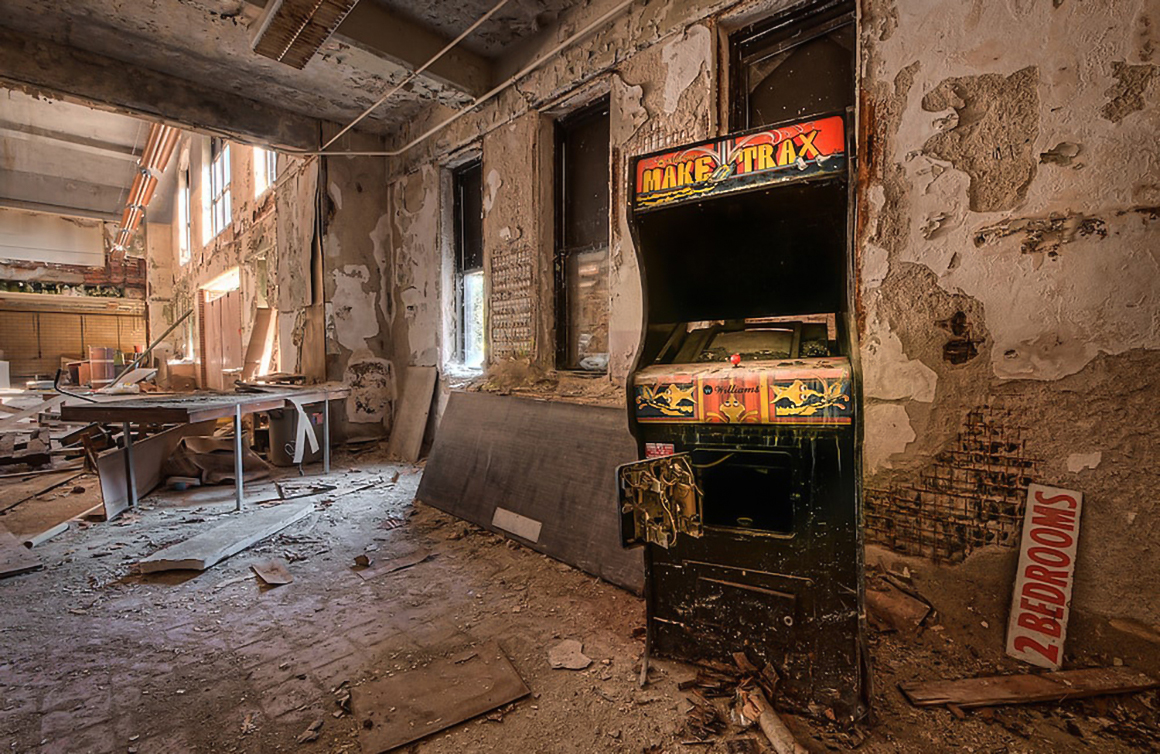I’ve owned classic arcade machines for just over 15 years now. I guess you could say that I’m pretty immersed in the hobby. My current setup consists of 15 full-sized video arcade games in various states of repair, from the 70s and 80s, “The Golden Age” of arcade gaming.
It requires an investment of time and dedication. And space. Lots and lots of space. These machines are heavy, imposing beasts. Mrs Temple reminds me that it’s not like you can throw a blanket over them and pretend they aren’t there when we have guests over, or place the collection in vinyl envelopes and have them neatly populating a couple of binders or display them in a glass cabinet under a lamp in a corner somewhere. Trading cards or figurines they most certainly are not.
Arcade collecting and restoring is not a sensible hobby. Rather than playing and enjoying my games, I tend to spend most of my “hobby” time on my hands and knees, torch and multimeter in one hand, 40-year-old schematic diagram in the other, trying to work out why my Atari Asteroids cabinet has decided to take a dump for the fourth time in as many months. Look at certain arcade machines in a funny way and they’ll decide to shut down without warning, or even worse, actually catch fire (yep, ask me how I know). The first line in the arcade collecting handbook will read: if you’re going to own even just one single classic arcade cabinet, at some point, it will break down – and it could be the moment you get it home and switch it on. It can be heart-breaking at times. Seriously.
What’s more, my home “arcade” room is at the very top of the house. Unlike my American-based counterparts, over here in the UK, our living space comes at a premium. Every single step in my house laughs at me one by one as I (and some poor unsuspecting victim who I’ve persuaded to help me) lug another of these dead-weight objects slowly up the stairs whilst trying desperately not to kill ourselves by dropping a 350lb lump of metal and wood onto whoever has the short straw underneath. Or potentially even worse – induce the wrath of the lady of the house when the walls are inevitably scraped by a sharp arcade machine corner (again, ask me how I know).
And overlaying all of this is that none of the required skills to restore and maintain these things come naturally to me. I’m not a great repairer. I have a permanent bad back. I don’t operate very logically and often miss the obvious when looking at a problem. I’m pretty lazy and usually look for the short cut in life. None of these things is conducive to owning, restoring and maintaining old arcade machines.
To give you an idea, this hobby isn’t just about plugging in an arcade machine. You have to find them (often in the strangest and most dangerous of places). You have to learn how to repair wood, electronics, artwork, controls, wiring, PCBs. Then there’s the art of troubleshooting a problem and researching repairs and spare parts. Deciding what stays in your collection and what has to go. How to handle these 40-year-old delicate objects in a way that won’t damage them. It’s not one dimensional – there are many aspects and you have to at least dabble competently in all of them.
So with that very real and never-ending context, I do question my motivation at times. What’s the point? Why don’t I collect stamps or Action Man figures instead? Like a divorced, single parent, these inconvenient arcade artefacts come as part of my package, and they are very demanding in terms of space, time and attention.
But the fact of the matter is, someone has to save these things. As I’ve written before here on Toy Tales, the cultural importance of these early games cannot be underestimated. As videogames move forward at pace, these pioneering titles are easily forgotten, their cabinets regarded as junk to those who come across them in abandoned houses and basements. But to me and my collecting colleagues, they are works of art. The glow of the phosphor on the cathode ray tube, the artwork, the shape of the cabinet, the sounds, the incandescent bulbs subtly lighting up the attract panels, the combined smell of the wood and warm dusty electronics, the ergonomics of the controls, the game itself – there is an inherent beauty that is so easily overlooked by the casual observer.
MAME (Multiple Arcade Machine Emulator) has been preserving the code of these games with great success. But arcade code is only one part of the story. It was the physicality of the games that really meant something back in the day – preserving precisely that is what connects the games to the people who play them. This is why I do what I do, and try to document as much of it as possible on my website, The Arcade Blogger.
I think I might be slightly mad to continue to put myself through the pain of arcade restorations. But at least I’ll go out smiling.
Tony Temple is an arcade game historian, collector, and writer. Read The Arcade Blogger to learn more about his collection and the history of arcade games.
Note: If you buy something using the eBay link in this story, we may earn a small commission. Thank you for supporting independent toy journalism!

